Alfons Maria Mucha: The Art Nouveau Pioneer
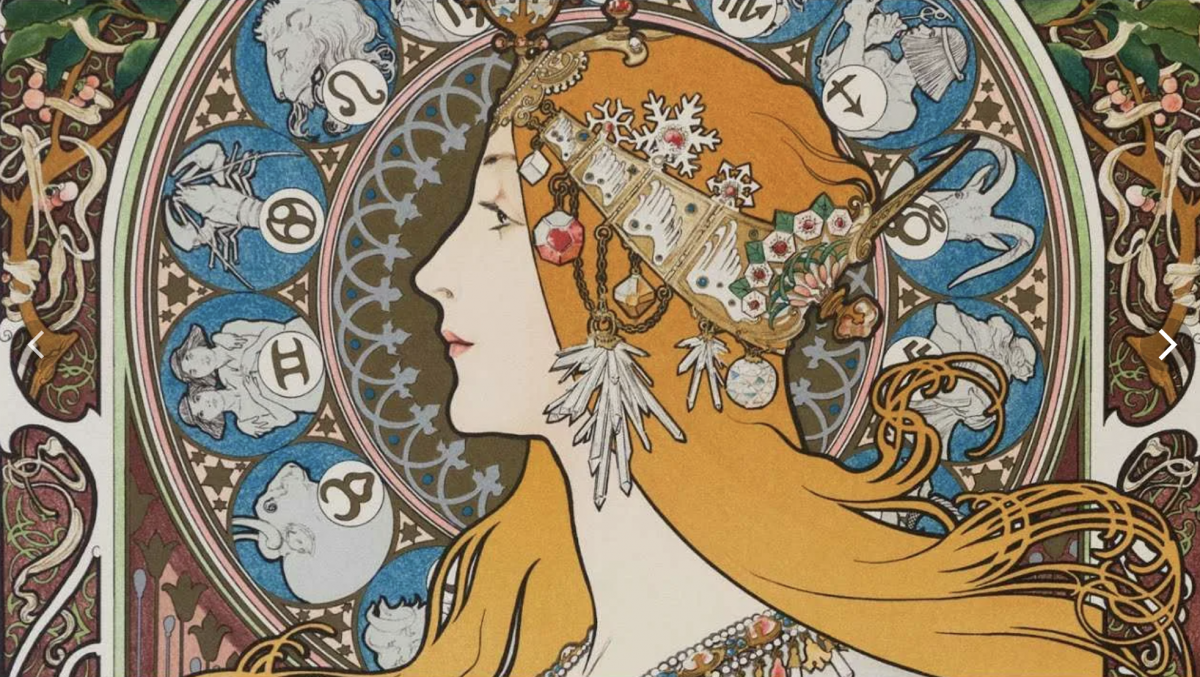
When whispers of the Art Nouveau movement come into the conversation, one name invariably follows: Alfons Maria Mucha, a figure synonymous with an era that combined lush illustration, vibrant detail, and whimsical design. Born in 1860 in what is now the Czech Republic, Mucha's legacy is a fascinating tapestry woven from the threads of art, nationalism, and the allure of a bygone aesthetic.

A Flourishing Career in Paris:
Mucha's journey to prominence began with his move to Paris in 1887, where he pursued his artistic studies and initially encountered financial difficulty. It wasn't until 1894 that his fortunes turned, quite literally overnight, with the now-famed "Gismonda" poster for Sarah Bernhardt, one of the most celebrated actresses of the time. The poster showcased Mucha's distinct style — a harmonious blend of natural forms, sensuous women with flowing hair, and a mosaic of intricate patterns — thus catapulting him into the limelight.

His work quickly became the visual lexicon for the Art Nouveau movement, characterizing not only posters but also a myriad of decorative objects, from jewelry to wallpapers, from furniture to theatre sets. What set Mucha's work apart was a unique elegance and an impression of abundant vitality, an art that celebrated beauty in all its forms.
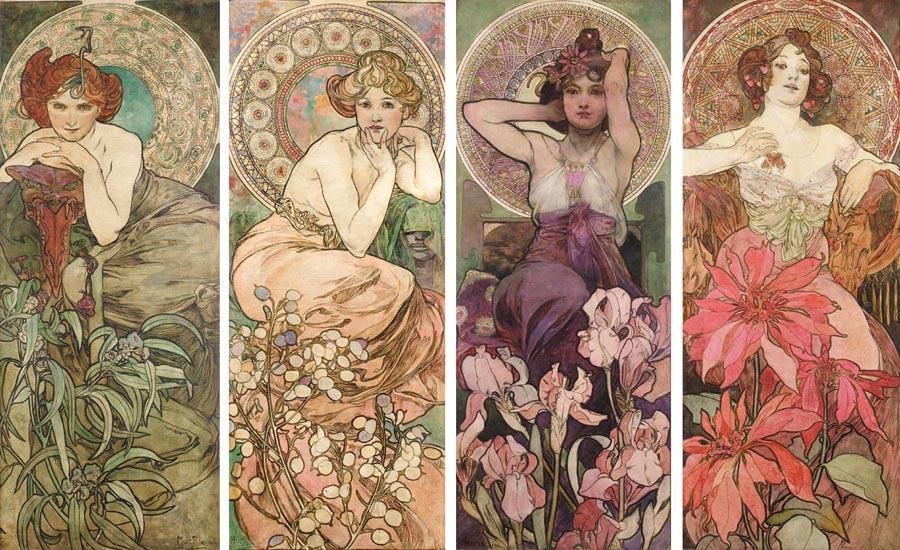
The Spirit of Slav Epic:
Beyond the illustrative pieces, Mucha had a deep-seated passion for his homeland and Slavic cultural history. His magnum opus, "The Slav Epic," was a testament to this devotion, capturing the triumphs, tragedies, and mythology of the Slavic people in a series of twenty monumental paintings. This project spanned two decades, and while not as commercially celebrated as his decorative works, it represented the height of his artistic ambition and patriotic sentiment.

Symbol and Style:
Mucha's artistry is immediately recognizable. His development of a sinuous line, often referred to as the "whiplash," his use of pastel colors, and his blending of Byzantine, Gothic, and Rococo influences, all contributed to a style that was not just new, but revolutionary at the turn of the century. His portraits, often of wistful women with floral crowns and halos, became iconic symbols of femininity and natural grace. He also had a skill in typography, integrating text and image seamlessly and stylishly, significantly influencing graphic design.
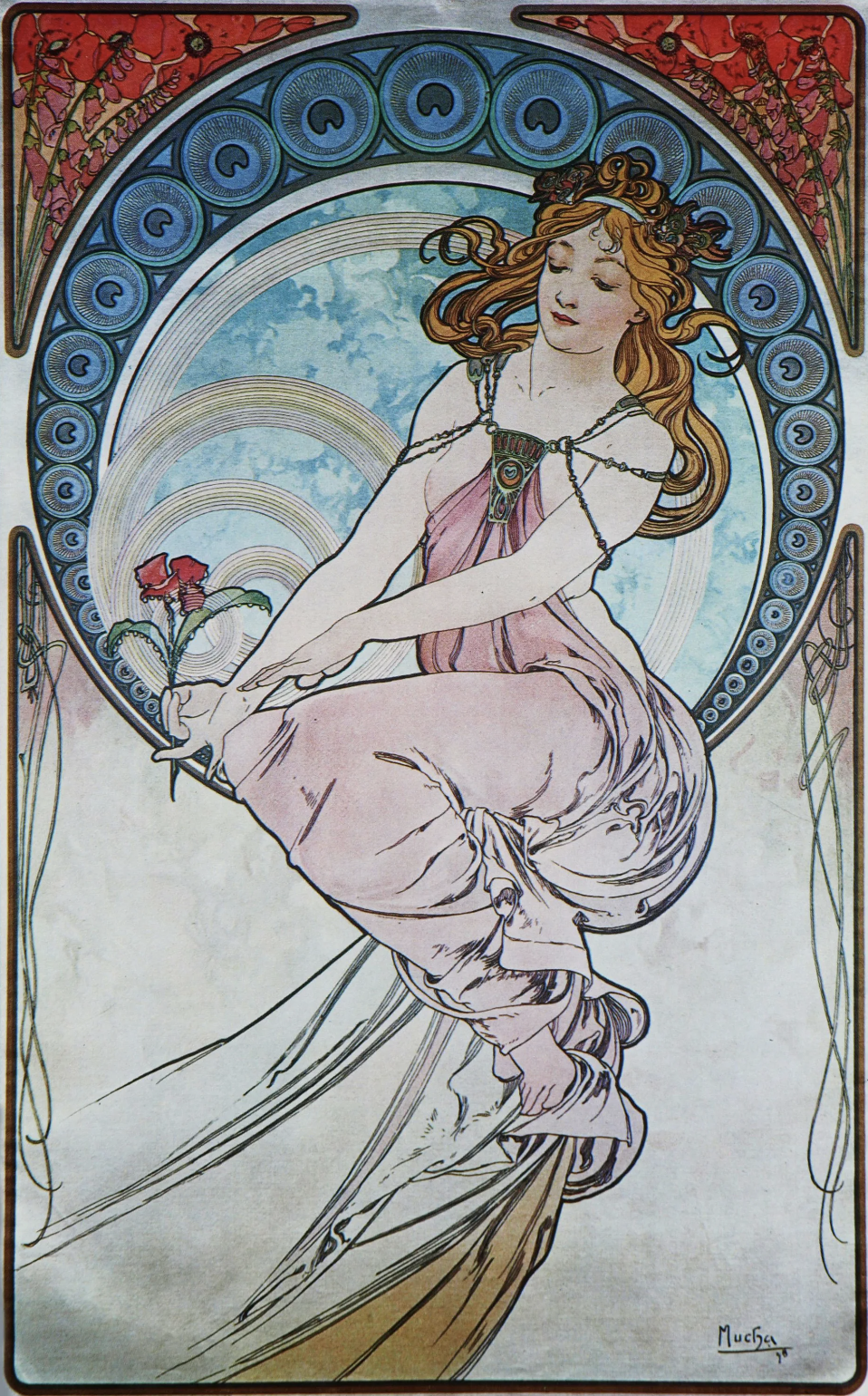
A Lasting Influence:
Although Mucha did not consider himself part of the Art Nouveau movement, he became one of its chief architects. His influence on visual art is undeniable and extends to various forms of design that include advertising, book illustrations, set design, and even influenced the aesthetics of silver screen sirens of the early 20th century.
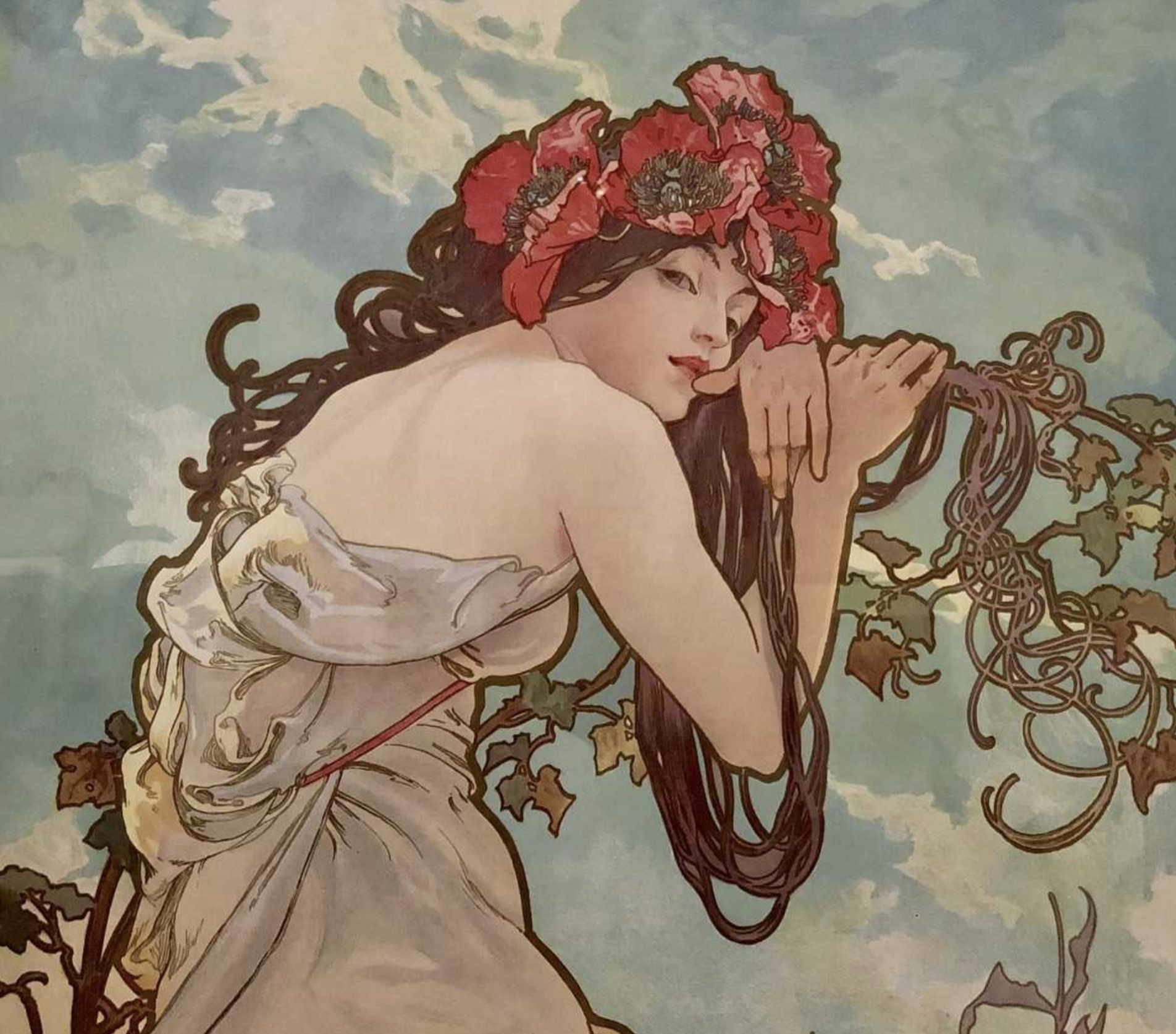
Despite the commercial appeal of his work, Mucha never let go of his greater artistic and spiritual ambitions. He saw his art as a vehicle for cultural elevation, a pursuit epitomized in his philosophical manifesto, "The Slav Epic."

Mucha Today:
Today, Alfons Maria Mucha’s work enjoys global renown, celebrated in museums and galleries worldwide, and cherished by art lovers and historians as quintessential examples of Art Nouveau. Original Mucha pieces are highly sought-after collectors' items, while reproductions continue to adorn the walls of those enchanted by the nostalgic allure of his vision.
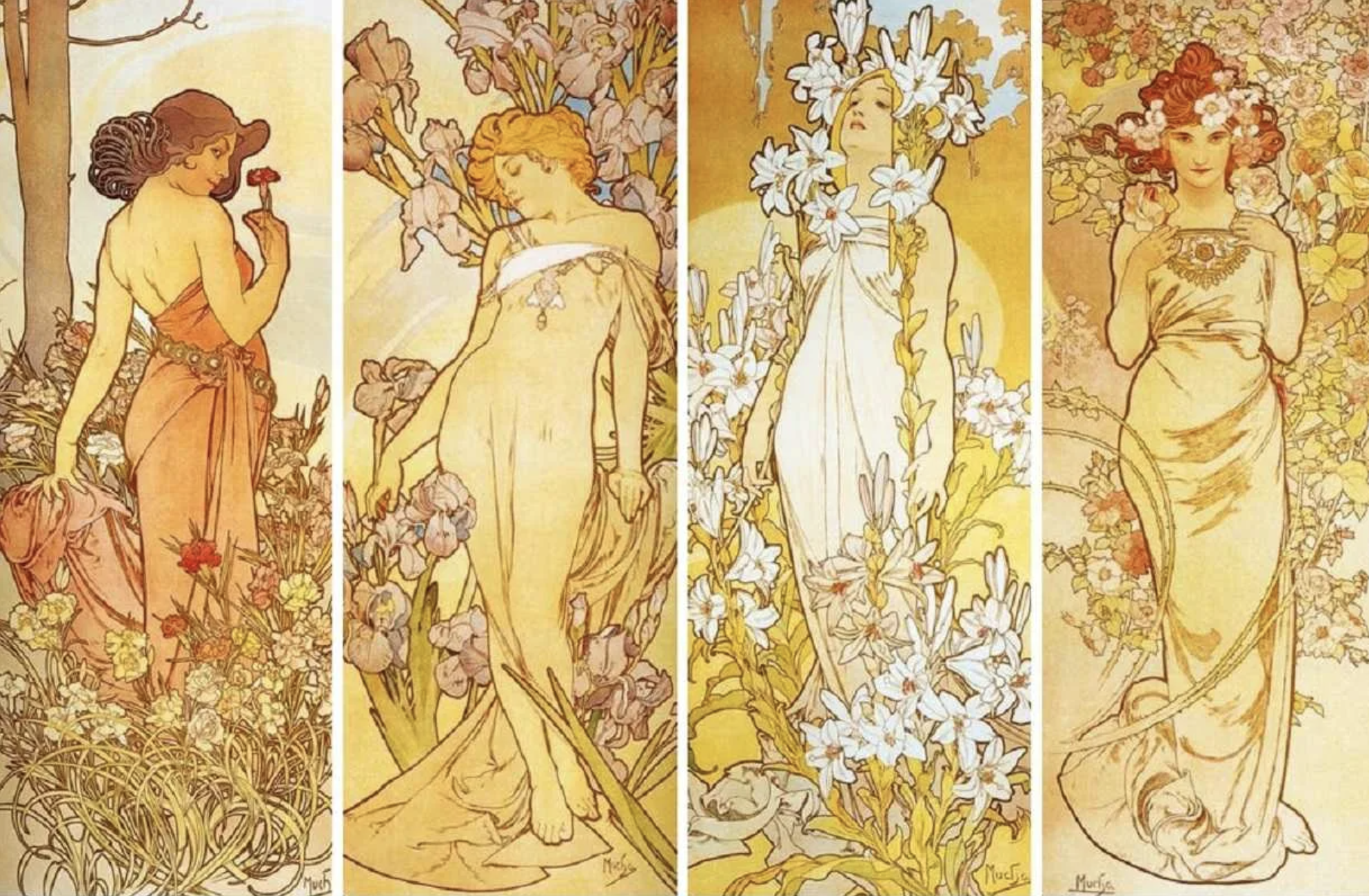
Mucha's legacy persists as a reminder of the symbiotic relationship between commercial and fine arts, where beauty and function coincide. As contemporary design continually evolves, Mucha's oeuvre offers an enchanting look back at an age where art sought to beautify every dimension of life, urging us to consider the aesthetic values and cultural narratives that shape our world today.